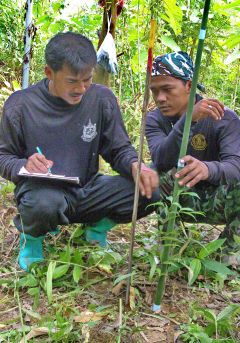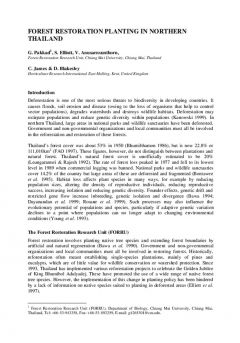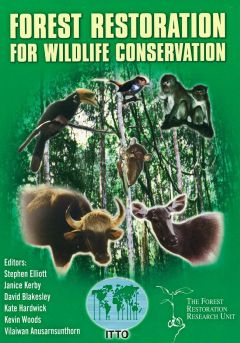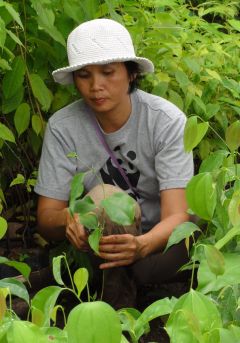Publications
1: Selection of native tree species for restoring forest ecosystems
ABSTRACT: The framework species method is a well-established tropical forest restoration technique, which involves planting 20-30 indigenous forest trees species, with high survival and growth...
2: Testing framework tree species for restoring biodiversity on degraded forestland in Northern Thailand
ABSTRACT: The framework species method of forest restoration is designed to restore diverse forest ecosystems on degraded forestland for biodiversity conservation of environmental protection. It...
3: Forest restoration planting in northern Thailand
Deforestation is one of the most serious threats to biodiversity in developing countries. It causes floods, soil erosion and disease (owing to the loss of organisms that help to control vector...
4: Testing framework species for restoring biodiversity on degraded forestland in Northern Thailand
ABSTRACT: The framework species method of forest restoration is designed to restore diverse forest ecosystems on degraded forestland for biodiversity conservation of environmental protection. It...
5: The Chiang Mai Research Agenda for the Restoration of Degraded Forestlands for Wildlife Conservation in Southeast Asia
Back in 2000, forest restoration research was far from main stream. Deforestation was regarded as irreversible and the idea that ecologists could actually find a way to restore tropical forest...
6: Nursery technology and tree species selection for restoring forest biodiversity in northern Thailand
ABSTRACT: The Forest Restoration Research Unit (FORRU) was established in 1994 to develop methods to restore forest ecosystems in degraded areas for the conservation of biodiversity in northern...
7: Morphological database of fruits and seeds of trees in Doi Suthep-Pui National Park
Abtract: Doi Suthep-Pui National Park supports an exceptionally high diversity of vascular plants. Surveys conducted by J.F. Maxwell since 1987 have enumerated a total of 2,145 species to date, of...
8: Selecting species for restoring degraded forests in northern Thailand
ABSTRACT: This paper proposes a system to score the suitability of tree seedling species for planting, to accelerate natural forest regeneration on degraded sites within protected areas in...
-
- 13: 8
- 12: 3
- 14: 3
- 36: 3
- 15: 2
- 10: 1
- 11: 1
- 16: 1
- 33: 1
- 34: 1
- 35: 1
- 37: 1
- 39: 1
-
- 42: 8
-
- 48: 7
- 21: 4








